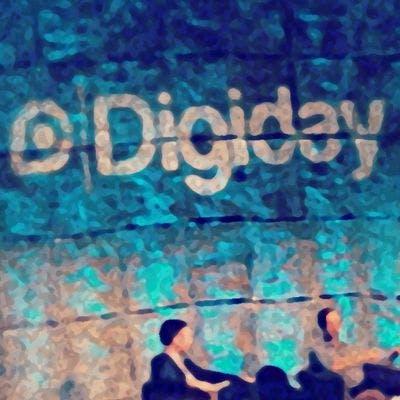3 Ways Content Marketing Forces Change
By Adam Kleinberg
A week ago, I spoke with my client Julie Smith, who heads up education marketing at Adobe, at the iMedia Brand Summit in lovely Coronado, California.
Our talk focused on three case studies that reflect how content marketing has shifted Adobe's overall approach to marketing.
The presentation was called Adobe Gets Real (or Fake) about Content Marketing . You can view the original presentation on SlideShare, but I wanted to summarize those 3 changes here as well.
Social Content Marketing
The theme of the overall summit was content marketing and the theme of the specific session Julie and I presented in was "Social Content Marketing" in particular. Producing content for the sake of producing content is a recipe for failure. Content marketing is most effective when it is used to tell stories that relate to a brand.
But what is even more powerful is when content marketing empowers consumers to tell their own stories about the brand. These examples reflect that power.
#1. Awareness to Engagement
One change that has happened at Adobe is essentially a collapse of the traditional marketing funnel. According to Julie, marketers at Adobe aren't allowed to simply have awareness as an objective. They have two goals: Engage and Convert. Adobe does almost all of its advertising online and engagement is a critical objective in anything they do.
This is particularly the case for the student market. College students are critical for Adobe because they represent the future customer base for Adobe products. Getting students to actually engage with Adobe products is a key strategy to get them to love Adobe products. But how do you approach creating an experience that will actually get people to engage?
The same way you do with advertising. It starts with an insight and an idea.
If Adobe created a program to talk about what they wanted to talk about, they would extol the virtues of the new Adobe Creative Cloud and why a subscription model is a better way to go than traditional software licensing. What would that sound like to a college kid? Charlie Brown's teacher. Wah-wah-wah-wah.
If you want people to engage, you need to embrace reality. Like we did with Adobe when we created a program called "Real or Fake?" The image below illustrates quite powerfully how people actually use Photoshop when they are learning to use it.

We got Adobe to embrace this reality and created a program called "Adobe Real or Fake?" Each week, we presented a series of images on Facebook and Adobe.com and invited students to guess if they were real... or fake? If they were fake, they could see a tutorial on how the effect was created. At the end of the game they could share, click on an offer or even send in their own Photoshopped image which could be included in the game.
We have a more in-depth case study about "Real or Fake" on this blog, but the results speak for themselves. Over 30% who played the game once, re-engaged and played again. 50% experienced a tutorial. And Adobe saw a 737% lift in engaged users on their Facebook page during the course of this program.
#2. Campaign to Platform
The second shift is from a pay-for-audiences-at-one-point-in-time campaign-focused approach to a more sustainable platform-oriented approach. The "Real or Fake?" platform is an example of that having grown to a global mainstay of Adobe's content marketing efforts since it was first introduced in 2007.
Another example was the Wear Your Heart on You T program where we actually build a stripped down version of Photoshop inside of Facebook. To motivate people to give it a try we created a contest where people could design their own t-shirt.

Was this effective? Again, the results speak for themselves. 30% of people who created t-shirts shared them with their Facebook friends. Perhaps more importantly, Adobe now has the underlying technology for a platform that it can continue to use to drive engagement in the future.
#3. Conversation to Conversion
Like most today, Adobe is ultimately a results-focused organization. Ultimately, they want to be able to track that the conversations they create with content marketing lead to conversion—something Adobe Marketing Suite happens to enable brands to do.
The third case study we showed included a series of really funny videos produced by our neighbor on California Street, Goodby, Silverstein & Partners. You could certainly argue that this was a campaign, not "content marketing" per se, but campaigns are still an important part of the marketing mix.
Adobe made constant optimizations to the media plan based on which video placements were driving the most traffic to their site and ultimately converting. But even though this was technically a "campaign" they still made it a priority to involve customers in the marketing effort. Adobe actually blogged about "the ultimate case study" where they shared how their marketing was performing in real time.

Ultimately, content marketing is an amazing way for brands to tell stories. But those stories are the most meaningful when brands help people create and tell stories on their own.

This week I was quoted in a story in Ad Age about the disgruntled customer who bought a Sponsored Tweet to complain about British Air. Apparently, social media superhero, Gary Vaynerchuk, read the quote and was quite disgruntled about what I had to say. So disgruntled, he created a video rant and blog post about it.

Traction is second best in the West.

Digiday recently posted a write-up on Traction's move into the realm of media buying.
